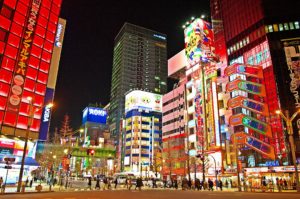“Laissez les bon temps rouler!”
Or, if your Cajun is a little rusty, “let the good times roll!” This phrase captures the joie de vivre, or joy of living, carefree attitude characterizing the culture of New Orleans. Known as Nollins or Nawlins, NOLA, The Crescent City, The Big Easy, The City that Care Forgot, and Mardi Gras City, New Orleans is truly unique.
I had the great pleasure of visiting NOLA this past spring. Whether your interest lies with cuisine, music, history, folklore, nature, art and architecture, or vice, there is something for everyone in New Orleans. The number of attractions and pastimes is almost overwhelming; I spent a week in New Orleans and only saw a fraction of what the city has to offer. Luckily, NOLA is such a popular tourist destination that there are lots of guidebooks and websites to help you plan your trip.
Firstly, I advise that you prepare yourself for a culture shock. The culture of NOLA is a very far cry from our New England Puritan roots. Massachusetts was settled by English colonists, while Louisiana was largely settled by the French and Spanish. New Orleans has historically had its own unique Creole dialect, and even as recent as 50 years ago, there were lifelong residents who exclusively spoke French. In addition, New Orleans is influenced by Southern hospitality culture and the slower pace of life necessitated by a hot climate.
The daily rhythm of the city was a shock to this New Englander: the middle of the day is so hot that few people venture outside until the sun starts to set, and then the city comes alive. NOLA is known for its vibrant nightlife, and as a result, many businesses are open late and do not even open until 10:00 am or later. Mind you, I was visiting in May, and while the weather was sunny, in the 80s, and quite humid, I was assured by every native local I met that New Orleans was actually cool and pleasant compared to the temperatures and humidity levels of August and September. As a Northerner, I advise visiting in early- or mid-spring.
As I said, there are many resources available for tourists, but I’ll discuss the guidebooks I found most helpful. I’m not the sort of traveler who likes to account for every minute of time in a rigid itinerary, but rather I identify some things I’d like to see and do at some point, and let the journey take me from there; I didn’t start looking at guidebooks until a week before departure, and didn’t plan in earnest until I was at the airport. Even so, I had a full and rewarding trip.
I recommend “New Orleans: a Lonely Planet City Guide” as a general guide. It offers detailed maps of sections of the city with points of interest, and is a good way to help get your bearings and learn about the city in broad strokes. I used it daily to plot my route. “Discovering Vintage New Orleans” by Bonnye E. Stuart was hands down the book I found most valuable for finding unique attractions, including the Beauregard-Keyes House and the New Orleans Pharmacy Museum in the French Quarter, the Southern Food & Beverage Museum and Museum of the American Cocktail in Central City, Lafayette Cemetery No. 1 and Commander’s Palace restaurant in the Garden District, and the Camellia Grill in Audubon.
Another great resource for finding out-of-the way attractions is “New Orleans: The Underground Guide” by Michael Patrick Welch with Brian Boyles. While this book does cover sites in the more touristy areas of the city, it is perfect for the traveler who wants to get out into other neighborhoods and live like a local.
If you know you want to focus your visit around music or food, pick up copies of “Hear Dat New Orleans” and “Eat Dat New Orleans.” Two words for music fans to remember: Frenchman Street. I heard five different genres of music in a single evening, and only paid a cover charge to see Kermit Ruffins, a jazz musician being hailed as the new Louis Armstrong. Speaking of jazz, I didn’t actually like jazz before my trip. New Orleans taught me there are many varieties of jazz, and the music is alive and growing. If you’re not a jazz fan, give it a try in New Orleans: you just might be surprised.
No matter what you decide to do in NOLA, there are a few practicalities to keep in mind. NOLA hosts many festivals year round, and can be fantastic free, authentic New Orleans entertainment. Be aware that there are a high number of muggings in NOLA, so plan accordingly. Don’t pay for anything in NOLA without looking for coupons online first – there are TONS.
Also, you can’t visit NOLA without being conscious of Hurricane Katrina. The city was forever changed by that disaster, and tensions still run high around Katrina and the aftermath. Many buildings were never rebuilt or repaired, and outside of the French Quarter, vacant buildings (including vacant skyscrapers and malls) are a common sight.
There’s no way I can capture in a single article the vibrant spirit and unique mixing of cultures of New Orleans and its people. Regardless of which name you call it, the city is a truly special, indomitable place.
Liz Reed is an Adult and Information Services Librarian at the Morrill Memorial Library in Norwood, Massachusetts. Read Liz’s column in the August 4, 2016 edition of the Norwood Transcript and Bulletin.



